Blood and Black Lace
7.8 /10 1 Votes
83% Rotten Tomatoes Genre Horror, Mystery, Thriller Country ItalyFranceWest Germany | 7.3/10 IMDb Budget 150,000 USD Duration | |||||||||||||||||||||||||||||||||
 | ||||||||||||||||||||||||||||||||||
Release date March 14, 1964 (1964-03-14) (Italy) Cast (Max Marian), (Contessa Cristina Como), Thomas Reiner (Inspector Silvester), Ariana Gorini (Nicole), (Frank Sacalo), (Peggy Peyton)Similar movies Blackhat , John Wick , Knock Knock , Taken 3 , Salt , I Spit on Your Grave III: Vengeance is Mine | ||||||||||||||||||||||||||||||||||
Blood and black lace trailer mario bava 1964
Blood and Black Lace (Italian: Sei donne per l'assassino, 'Six Women for the Murderer') is a 1964 giallo directed by Mario Bava. Bava co-wrote the screenplay with Giuseppe Barilla and Marcello Fondato. The film stars Cameron Mitchell and Eva Bartok. The story concerns the stalking and brutal murders of various scantily-clad fashion models, committed by a masked killer in a desperate attempt to obtain a scandal-revealing diary.
Contents
- Blood and black lace trailer mario bava 1964
- Blood and black lace trailer
- Plot
- Production
- Release
- Home video
- Initial response
- Later reception
- References
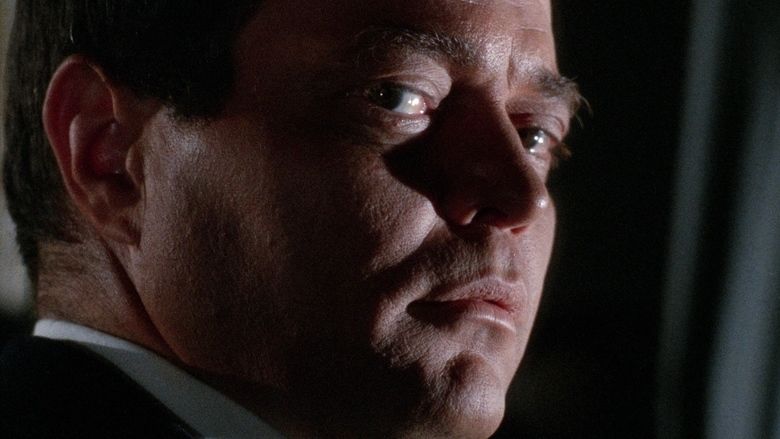
The film is generally considered one of the earliest and most influential of all gialli films and served as a stylistic template for the "body count" slasher films of the 1980s. Tim Lucas has noted that the film has "gone on to inspire legions of contemporary filmmakers, from Dario Argento to Martin Scorsese to Quentin Tarantino." In 2004, one of its sequences was voted No. 85 in "The 100 Scariest Movie Moments" by the Bravo TV network.
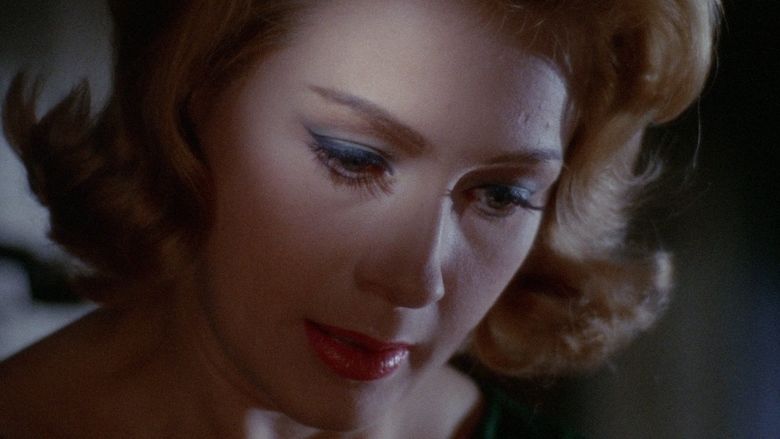
Blood and black lace trailer
Plot

Isabella (Francesca Ungaro), one of many beautiful models employed at a fashion house, is walking through the grounds that lead to the establishment one night when she is attacked and violently killed by an assailant wearing a white featureless mask. Police Inspector Sylvester (Thomas Reiner) is assigned to investigate the murder and he interviews Max Marian (Mitchell), the manager who co-manages the salon with his lover, the recently widowed Countess Cristina Como (Bartok). Max attests that he can not provide any information whatsoever that can assist the inspector, but as the investigation continues all of the fashion house's various sins, including corruption, abortions, blackmail and drug addiction, begin to come to light. It is revealed that Isabella had kept a diary detailing these vices, and suddenly almost every employee becomes nervous.
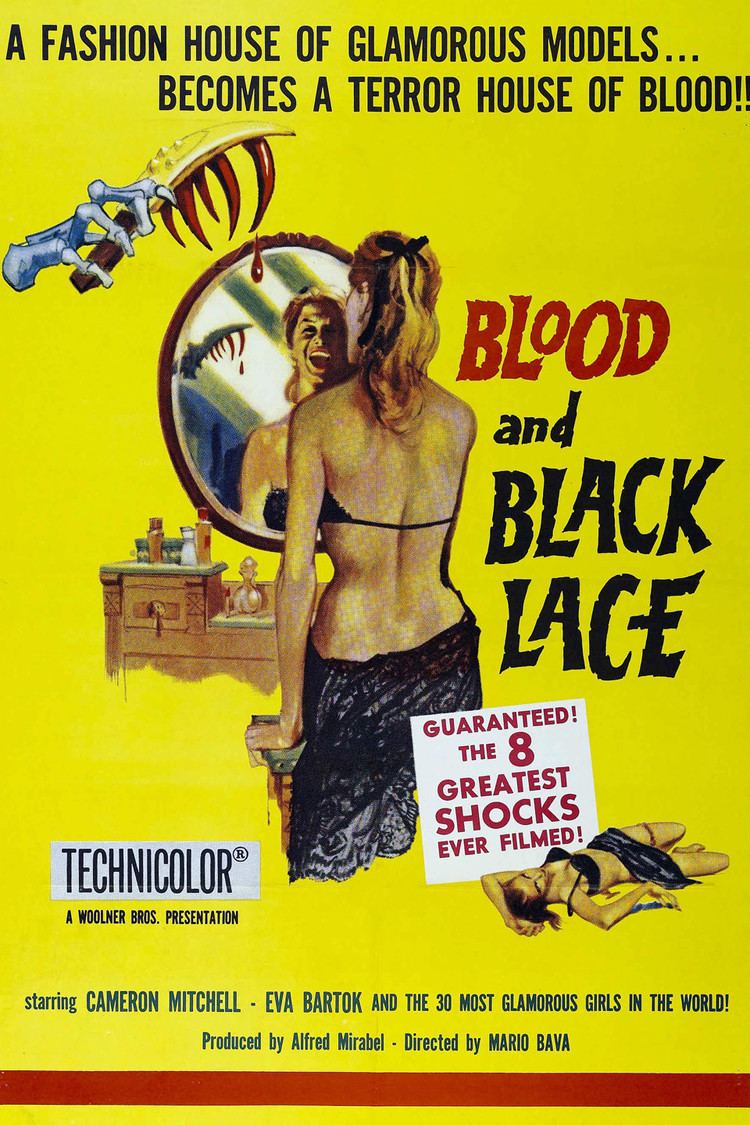
Nicole (Ariana Gorini) finds the diary, and she promises to provide it to the police, but Peggy (Mary Arden) manages to steal it from her purse during work. That night, Nicole drives to an antique store owned by her paramour, Frank (Dante DiPaolo). He is not there, and while inside she suddenly finds herself stalked by a black clad figure, who had apparently been waiting for her. She gets to the front entrance door but is grabbed from behind by the masked individual, who raises and slams a spiked glove into her face, killing her instantly. The murderer searches the corpse and her purse for the diary. When it becomes clear that she did not have it, the killer runs out of the shop.
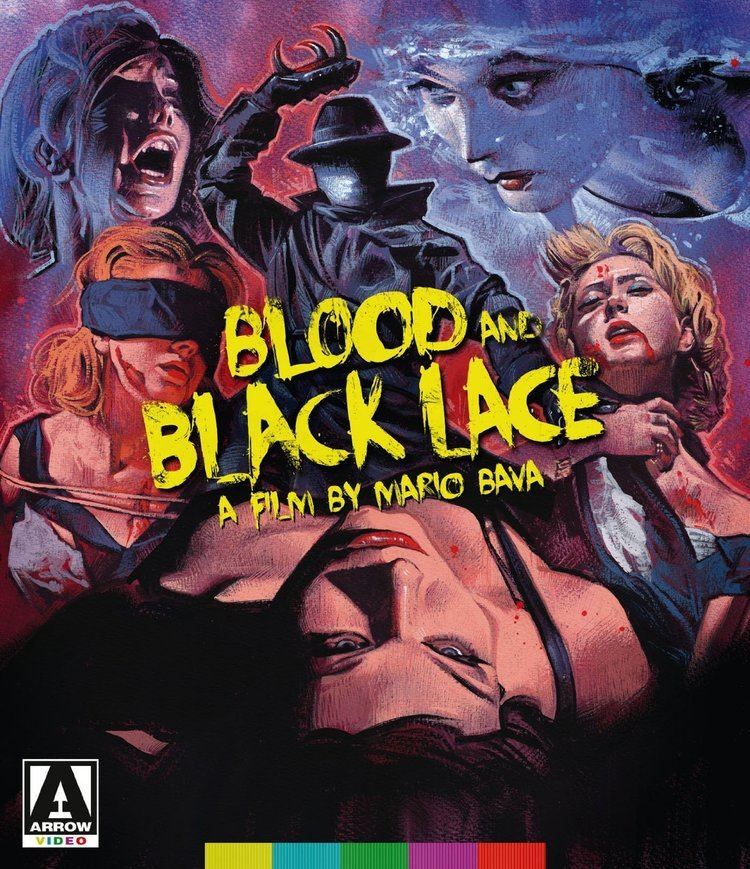
The murderer next visits Peggy's apartment. The killer gains entrance simply by knocking on the front door, and when Peggy opens it, the masked figure abruptly walks inside. The assailant slaps and hits her repeatedly, and she explains that she no longer has the diary and had in fact burned it in the fireplace. When her attacker checks the fireplace to see if she told the truth, she tries to pick up a telephone to call for help. Enraged, the murderer hits her over and over again in the face until she is knocked unconscious. The assailant then carries her away just as the police arrive.
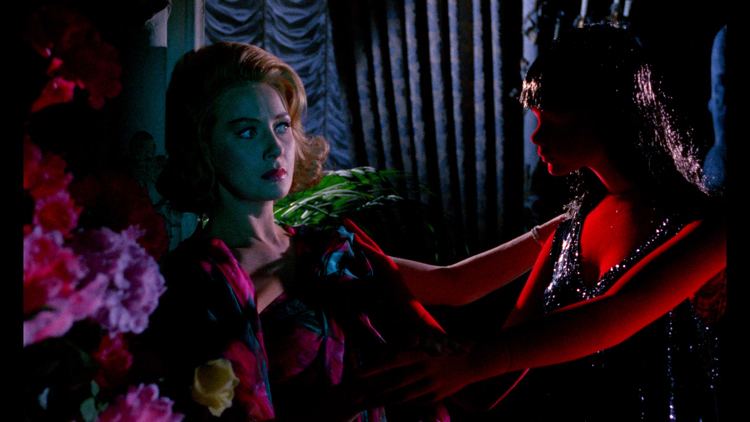
Peggy is taken to another location and tied to a chair. The killer tortures her, demanding to know where the diary is. The woman reaches up and knocks off the mask. The shocked girl recognizes her assailant, who proceeds to kill her brutally by slowly pressing her face against the red-hot surface of a burning furnace.
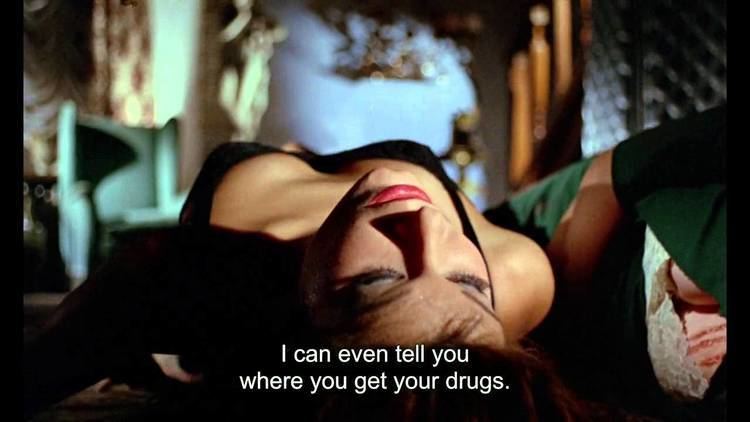
Inspector Sylvester is convinced that the murderer is one of the men employed at the fashion house, so he arrests all of those he believes might be related to the deaths. However, while the suspects are in custody, Greta (Lea Krugher) discovers Peggy's corpse hidden in the trunk of her car, and is then attacked and smothered to death by the killer. After discovering the bodies of the latest victims, Sylvester releases all of the men.

Max visits Cristina and reminds her about how he had assisted in the murder of her husband. Isabella had found out that Max had been involved in the crime, and began blackmailing him. When she started asking for more and more money, Max murdered her. It was only later that Max and Cristina realized she had been keeping a diary that revealed everything. While attempting to retrieve the diary, Max had also killed Nicole and Peggy. When Max and the other men from the agency were placed under arrest, Cristina had murdered Greta to give Max an alibi for the previous killings. Now, Max tells Cristina that he once again needs her help and convinces her that after only one more death they will be safe. That night, the voluptuous Tao-Li (Claude Dantes) is drowned in her bathtub by the masked killer who, immediately after the murder, removes the mask and is revealed as Cristina. She uses a razor blade to slice the corpse's wrists in order to make the death seem like a suicide. Cristina prepares to leave the victim's apartment when she is interrupted by a knocking sound on the front door followed by the loud voice of a man identifying himself as the police. She decides to escape out the second story window and then tries to climb down a drainpipe, which falls under her weight, slamming her to the ground.
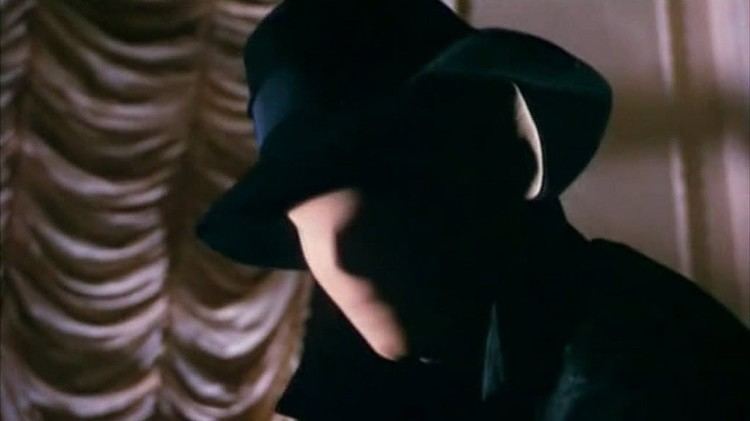
Later that night, Max searches through Cristina's desk, looking for money and documents. Suddenly, a bloody and bruised Cristina enters the room, shakily holding a gun aimed directly at Max. Max had been the "policeman" knocking on Tao-Li's front door, and, knowing how Cristina would attempt to escape, he had deliberately broken the drainpipe in such a way that it would be guaranteed to collapse. He attempts to persuade his lover and almost succeeds in getting her to hand over the gun, but she abruptly changes her mind and shoots him to death. The mortally wounded Cristina collapses next to Max's corpse.
Production
Mario Bava's Black Sunday (1960) and Black Sabbath (1963) were worldwide commercial successes. As a consequence, Bava was given creative control over Blood and Black Lace. An Italian-West German co-production, the film's backers were expecting a routine murderer-on-the-loose yarn in the Edgar Wallace tradition. In Europe during the early 1960s, movies based on the murder mystery novels of the incredibly prolific Wallace had become a mini-genre of their own. Forty or so of these movies were made, most of them produced in West Germany. Although some of the murder sequences could be vicious, the emphasis was on the police procedural and mystery aspects of the narrative.
But Bava was "bored by the mechanical nature of the whodunit" and decided to deemphasize the more accepted clichés of the genre. The stalk-and-kill sequences themselves were given more importance than all other concerns. He emphasized horror and sex in ways that had usually only been hinted at before.
Under the working title of "L'atelier della morte" ("The Fashion House of Death"), the movie was filmed in Rome during a six-week period between November 1963 and January 1964. The exterior locations of the fashion house were filmed at the Villa Sciarra and not at the Villa Pamphili as incorrectly reported by many sources.
The film's budget was low, approximately $150,000. Bava was forced to improvise numerous times during the production in order to get the technical results he wanted. Cameron Mitchell noted that in order to film an impressive dolly shot through the fashion house, Bava simply placed the camera on a child's red wagon. Similarly, Bava completed several crane shots by utilizing a "makeshift seesaw contraption."
The script was written in English in order to allow easier exportation to the United States. All of the cast members spoke their lines in English, some of them phonetically; however, after the production was completed, the original English-language soundtrack was not utilized for the U.S. release prints. A completely new dubbing track was produced in Los Angeles under the supervision of Lou Moss. Nearly all of the male voices were provided by Paul Frees.
Release
The film was shown in Italy on 14 March 1964 and on 7 April 1965 in the United States. In Italy, Blood and Black Lace was a box office failure, grossing only 123 million lire (approximately US $77,000), earning back only half of the production cost. It was subsequently nearly forgotten and became difficult to see in that country until a 1999 home video release. In West Germany, the film was a moderate financial success and helped convince the backers to film their subsequent Edgar Wallace-styled whodunits in color.
Because of the film's titillating combination of near-naked women and gory murder, American International Pictures passed on releasing "Blood and Black Lace"...despite having had commercial success with Bava's previous Black Sabbath, and Black Sunday. AIP felt Bava's movie was "too intense, too adult for the 'kiddie trade.'" The film was instead distributed in the U.S. by the Woolner Brothers (producers Lawrence and Bernard Woolner). Woolner Brothers released the movie after making only one minor change: the somewhat mundane original title sequence was replaced with a gory piece of semi-animation supplied by Filmation, featuring mannequins becoming riddled with bloody bullet holes.
Home video
Arrow Video released the Blu-ray Disc on 21 April 2015 in the United States and 13 April in the United Kingdom.
Initial response
Upon its initial Blood and Black Lace received a generally mixed response at the time of its initial release. In The New York Times, A. H. Weiler complained, "Murdering mannequins is sheer, wanton waste. And so is "Blood and Black Lace," the super-gory whodunit which came out of Italy to land at neighborhood houses yesterday sporting stilted dubbed English dialogue, stark color, and grammar-school histrionics." Variety felt it was an "okay mystery...handsomely produced." Monthly Film Bulletin noted that the film was Bava's "most expensive-looking and decorative horror film to date."
Leonard Maltin gave the film one and a half out of a possible four stars, criticizing the film’s "wooden script and performances" but complimented Bava’s direction, calling it "imaginative."
Later reception
The movie is often noted as an important title in the development of the giallo film genre and is considered to be one of the major movies of the so-called "Golden Age" of Italian horror. Almar Haflidason, reviewing the film for BBC Online, said that "Director Mario Bava stages all these murders with the flair and style that was to become a founding mantle for the giallo films... Through a prowling camera style and shadow-strewn baroque sets that are illuminated only by single brilliant colours, he creates a claustrophobic paranoia that seeps into the fabric of the movie and the viewer." Glenn Erickson, aka "DVD Savant", noted "Bava probably didn't mean to invent a subgenre with Blood and Black Lace, a murder story which forgoes the slow buildups and character development of previous thrillers to concentrate almost exclusively on the killings themselves." Fernando F. Croce of Slant Magazine stated, "The roots of the Hollywood slasher are often traced back to "Blood and Black Lace, yet Mario Bava's seminal giallo has a richness of texture and complexity of gaze that have kept its elaborate carnage scintillating even following decades of leeching from genre vultures."
Bava's mixture of eroticism and violence would prove a potent template for both giallo and slasher films. Tim Lucas has written that Blood and Black Lace was "one of the most influential thrillers ever made" and "the first authentic 'body count' movie."
The film currently has an 83% "Fresh" rating on Rotten Tomatoes.
References
Blood and Black Lace WikipediaBlood and Black Lace IMDbBlood and Black Lace Rotten TomatoesBlood and Black Lace themoviedb.org
